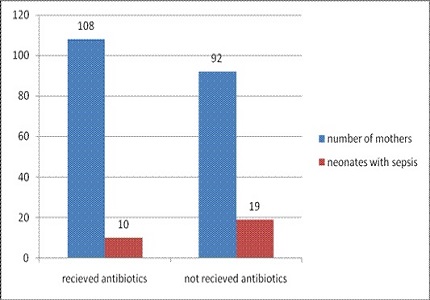Role of High frequency oscillatory mode of ventilation (HFOV) as a rescue treatment in newborns with impending respiratory failure after failed conventional mode of ventilation
Abstract
Introduction: High frequency oscillatory ventilation (HFOV) is a new mode of mechanical ventilation which by safer use of mean airway pressure higher than that used during conventional ventilation (CV) is better lung safety strategy in respiratory failure.
Aims and Objectives: To study the role of high frequency oscillatory ventilation at a tertiary NICU as rescue mode in neonates with severe respiratory failure.
Materials and Methods: 31 neonates admitted in NICU failing conventional mode of ventilation were studied prospectively from January 2014 to September 2015. Babies with respiratory failure failing conventional mode of ventilation were shifted to HFOV. On HFOV, babies were initially started on mean airway pressure 2 cm higher than on conventional ventilation and increased until a saturation of >95% is achieved. Neonates were again weaned off to CV, when target goals of oxygenation and ventilation were reached. Improvements were assessed periodically by arterial blood gas analysis (ABG) and other parameters.
Results: 31 neonates were shifted to HFOV as rescue therapy and primary outcome was improvement in oxygenation index and alveolar arterial oxygen radiant (A-aDO2) which were compared and also showed significant impact on secondary outcome of survival. Majority of neonates with primary diagnosis as meconium aspiration syndrome, congenital pneumonia showed 100% recovery. PPHN babies had 78% recovery, while babies with pulmonary haemorrhage had poor outcome. There was statistically significant improvement in oxygenation index and A-aDO2 in 15 babies after shifting to HFOV. Thus, the study shows that HFOV can be used as rescue therapy for neonates after failing conventional ventilation.
Downloads
References
2. WHO. Perinatal and Neonatal Mortality for the Year 2000: Country, Regional and Global Estimates.WHO; Geneva: 2006.http://whqlibdoc.who.int/publications/2006/9241563206_eng.pdf.
3. Neogi SB, Malhotra S, Zodpey S, Mohan P. Assessment of special care newborn units in India. J Health Popul Nutr. 2011; 29(5): 500–9. DOI: 10.3329/jhpn.v29i5.8904. [PubMed]
4. Bhuta T, Clark RH, Henderson-Smart DJ. Rescue high frequency oscillatory ventilation v/s conventional ventilation for infants with severe pulmonary dysfunction born at or near term. Cochrane Database Syst Rev. 2001;(1): CD002974 PMID:11279790. DOI: 10.1002/14651858.CD002974. [PubMed]
5. Yildizdas D, Yapicioglu H, Bayram I, Yilmaz L, Sertdemir Y. High frequency oscillatory ventilation for acute respiratory distress syndrome. Indian J Pediatr. 2009;76:921-7. DOI--10.1007/s12098--009-0151—9.
6. Kessel I, Waisman D, Barnet-Grinnes O, Ben Ari TZ, Rotschild A. Benefits of high frequency oscillatory ventilation for premature infants. Isr Med Assoc J. 2010;12(3):144-9. [PubMed]
7. Truog WE, Standaert TA, Murphy JH, Woodrum DE, Hodson WA. Effect of prolonged high frequency oscillatory ventilation in premature primates with experimental hyaline membrane disease. Am Rev Respir Dis 1984;130:76-80. [PubMed]
8. de Lemos RA, Coalson JJ, Gerstmann DR, Null Jr. DM, Ackerman NB, Escobedo MB et al. Ventilatory management of infant baboons with hyaline membrane disease; the use of high frequency ventilation. Pediatr Res1987;21(6):594-602. DOI: 10.1203/00006450-198706000-00018.
9. Weavind L, Wenker OC. Newer modes of Ventilation: An Overview. The Internet Journal of Anesthesiology 1999; Volume 4 Number 4. http://ispub.com/IJA/4/4/10738.
10. Hamel DS, Cheifetz IM. High-frequency oscillatory ventilation — a clinical approach. SAAJC 2005;Vol 21(1):15-25.
11. Schindler M, Seear M. The effects of lung mechanics on gas transport during high frequency oscillation. Pediatr Pulmonol. 1991;11(4): 335-9. DOI: 10.1002/ppul.1950110410. [PubMed]
12. Slutsky AS, Kamm RD, Rossing TH, Loring SH, Lehr J, Shapiro AH et al. Effects of frequency, tidal volume and lung volume on CO2 elimination in dogs by high frequency (2-30Hz), low tidal volume ventilation. J Clin Invest. 1981; 68(6):1475-84. DOI: 10.1007/s12098-009-0151-9. [PubMed]
13. Bryan AC, Froese AB. Reflections on the HiFi trial(editorial). Pediatrics.1991;87:565–7. [PubMed]
14. Lee EK, Chang YS, Park WS. High frequency oscillatory ventilation as a rescue therapy of severe neonatal respiratory failure. Korean J Pediatr.1998;41(4):456-65. [PubMed]
15. Smith J, Pieper CH, Kirsten GF, Maree D, Van Zyl J, Pretorius ML. High frequency oscillatory ventilation – rescue treatment for infants with severe respiratory failure. S. Afr. Med. J 1998;88(4):484-9.
16. Poddutoor PK, Chirla DK, Sachane K, Shaik FA, Venkatalakshmi A. Rescue high frequency oscillation in neonates with acute respiratory failure. Indian Pediatr. 2011;48(6):467-70. DOI: 10.1007/s13312-011-0073-2.
17. Ben Jaballah N, Mnif K, Khaldi A, Bouziri A, Belhadj S, Hamdi A. High frequency oscillatory ventilation in term and near term infants with acute respiratory failure: early rescue use. Am J Perinatol. 2006;23:403-11. DOI: 10.1055/s-2006-951289.
18. Sarnaik AP, Meert KL, Pappas MD, Simpson PM, Lieh-lah MW, Mary W, et al. Predicting outcome in children with severe acute respiratory failure treated with high-frequency ventilation. Crit Care Med. 1996;24:1396-402.DOI: 10.1097/00003246-199501001-00353. [PubMed]
19. Aggarwal R, Downe L. Use of High frequency ventilation as a rescue measure in premature babies with severe respiratory failure. Indian Pediatr. 2000;37:522-6. [PubMed]
20. Diwakar KK, Bhaskaranand N. Early experiences with high frequency oscillatory ventilation in neonates. Indian Pediatr. 1999;36:379-83. [PubMed]

Copyright (c) 2016 Author (s). Published by Siddharth Health Research and Social Welfare Society

This work is licensed under a Creative Commons Attribution 4.0 International License.


 OAI - Open Archives Initiative
OAI - Open Archives Initiative


